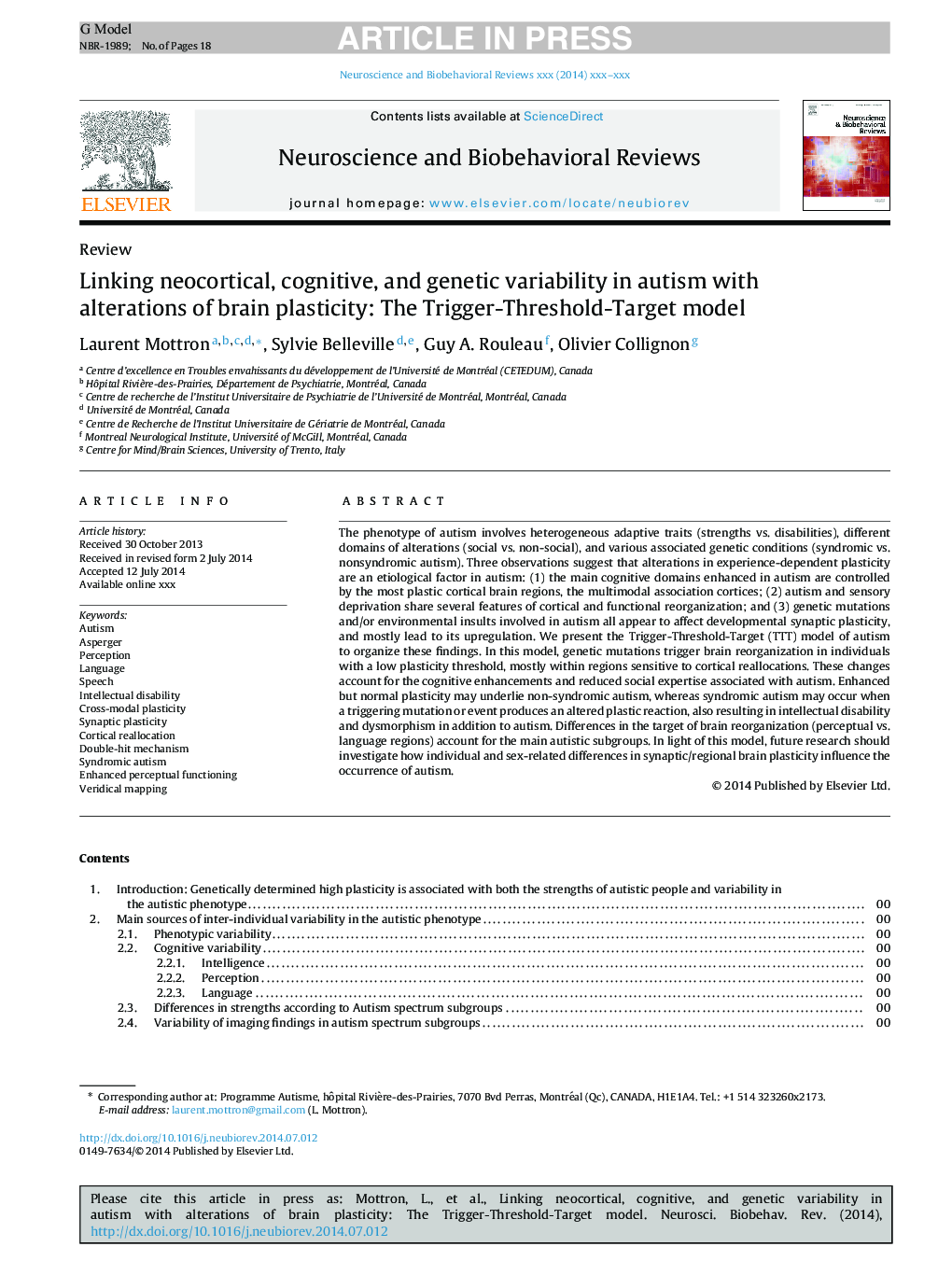| Article ID | Journal | Published Year | Pages | File Type |
|---|---|---|---|---|
| 7303947 | Neuroscience & Biobehavioral Reviews | 2014 | 18 Pages |
Abstract
The phenotype of autism involves heterogeneous adaptive traits (strengths vs. disabilities), different domains of alterations (social vs. non-social), and various associated genetic conditions (syndromic vs. nonsyndromic autism). Three observations suggest that alterations in experience-dependent plasticity are an etiological factor in autism: (1) the main cognitive domains enhanced in autism are controlled by the most plastic cortical brain regions, the multimodal association cortices; (2) autism and sensory deprivation share several features of cortical and functional reorganization; and (3) genetic mutations and/or environmental insults involved in autism all appear to affect developmental synaptic plasticity, and mostly lead to its upregulation. We present the Trigger-Threshold-Target (TTT) model of autism to organize these findings. In this model, genetic mutations trigger brain reorganization in individuals with a low plasticity threshold, mostly within regions sensitive to cortical reallocations. These changes account for the cognitive enhancements and reduced social expertise associated with autism. Enhanced but normal plasticity may underlie non-syndromic autism, whereas syndromic autism may occur when a triggering mutation or event produces an altered plastic reaction, also resulting in intellectual disability and dysmorphism in addition to autism. Differences in the target of brain reorganization (perceptual vs. language regions) account for the main autistic subgroups. In light of this model, future research should investigate how individual and sex-related differences in synaptic/regional brain plasticity influence the occurrence of autism.
Keywords
Related Topics
Life Sciences
Neuroscience
Behavioral Neuroscience
Authors
Laurent Mottron, Sylvie Belleville, Guy A. Rouleau, Olivier Collignon,
